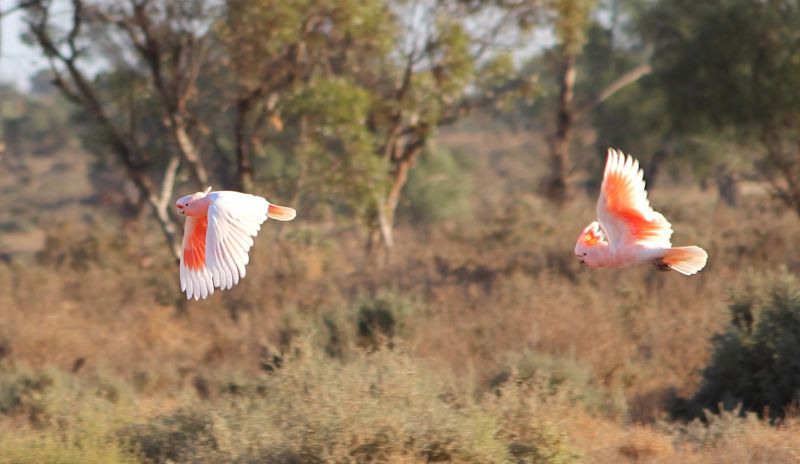Australia’s longest and most famous river is currently experiencing high flow, sparking to life hundreds of thousands of hectares of floodplain vegetation that hasn’t been inundated for decades.
This natural event is currently producing spectacular scenery and images for guests on the Murray River Safari and will allow the dry wetlands and woodlands to flourish for many years to come. Currently, Budgerigars are nesting, Cockatiels and Rainbow Bee-eaters are congregating, Splendid Fairywrens are being spotted and the floodplains are simply spectacular to witness.
“Fortunately, our Riverland towns in South Australia have lived through bigger flood events (1956, 1931, 1870) and are therefore well prepared. All of our towns are accessible and keen to host visitors who want to see a rare spectacular event such as this. Our broad river valley prevents sharp rises in water level and will slowly fill the red gum and dry box woodlands so needy of a thirst quenching drink,” says Founder of Murray River Trails, Tony Sharley.
“Overbank flows trigger the regeneration of phytoplankton and zooplankton, which in turn initiates the breeding cycle in insects, frogs, fish and water birds and recharges groundwater systems. It’s a natural and vitally important cycle. Each vegetation type is determined by elevation on the floodplain and therefore the frequency of flooding.
Bordered by cliffs and the dry sandy Mallee ecosystems, many bird and mammal species traverse both the Mallee and the valley for feeding, drinking, and breeding. Next year will be a spectacular time to visit South Australian river towns to see the vast river valley slowly filling, and enjoy the benefits of the single most important process that keeps a river healthy – a seasonal flood”, Tony explains.
The Riverland Ramsar Site is an internationally recognised wetland system of 30,615 hectares extending north-east of Renmark with a boundary that follows the 1956 floodline to the New South Wales border. It includes two major anabranch systems (Chowilla Creek and Ral Ral Creek) along an 80 km stretch of the River Murray, incorporating a series of creeks, channels, lagoons, billabongs, swamps, and lakes.
Several large shallow wind-formed lakes (also called ephemeral lakes) lie on the outer floodplain and connect to the river during these environmental watering events and natural floods. They teem with birdlife for long periods after filling in spring. Black Swans nest on floating platforms at the edge and many waders including red-necked avocets and pied stilts forage around the margins.
In Spring through to early Autumn, the intercontinental migratory species arrive from Alaska and Siberia to feed, including Red-necked Stints and Sharp-tailed Sandpipers. Red Kangaroos and Emus will often wander down for a drink at the lake edge, and cockatiels and Blue-bonnets are often seen around the margins of the lakes.
The award winning Murray River Walk and Murray River Safari will start operating again from March through to November 2023 and they will reveal the flourishing floodplain landscapes and the wildlife that will respond. “We are excited to share this with our guests, especially with our new luxury houseboat High River (what a fortuitous name) as your home base. It really is spectacular today and will be flourishing tomorrow”, says Tony.
These conditions are also transforming the floodplains further up the river across the Murray Darlin Basin, which measures an incredible 14% of the continent or one million square kilometres in area. This region is explored on the Private Mungo Outback Journey with Echidna Walkabout Nature Tours.
“In 2022, after decades of low rainfall and drought conditions, exceptionally high rainfall right across the Murray-Darling river basins has saturated the landscape. Both rivers are overflowing onto the floodplains, replenishing groundwater and soils. All this is leading to a rapid increase in vegetation and wildlife. Because the rainfall and flooding was so widespread, we expect a wildlife bonanza in 2023 that will probably flow over into 2024 and beyond”, Roger Smith said.

It is expected guests will experience large flocks of cockatoos and parrots, a considerable increase in larger mammals - especially kangaroos and a greater volume of reptiles on tour. The Private Mungo Outback Journey will also start operating again from March through to November 2023.








